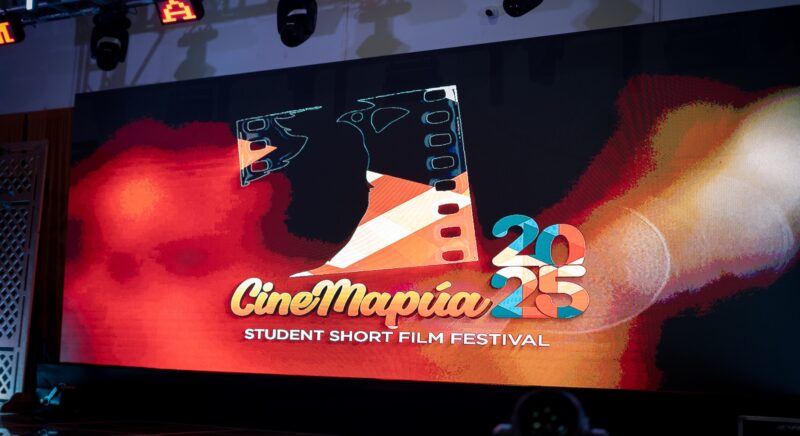Now that the dust has settled, we can finally ask what Art Basel Hong Kong meant for Philippine contemporary art.
Not the press releases or soft diplomacy, but the work itself: how it held up in the haze of spectacle and commerce.
In that hyper-curated labyrinth of art, curatorship, media spectacle, and collector power, did Philippine art claim ground or just serve as ornament? What remains now is the afterglow—or the fatigue?

Two months after Asia’s biggest art event, the presence of Philippine contemporary art remains impossible to ignore. From Manila mainstays to diaspora icons, Filipino artists stepped firmly into the spotlight.
Art Basel Hong Kong 2025 saw two Manila-based galleries stepping forward as flag-bearers of Philippine contemporary art—The Drawing Room and Silverlens Gallery. Here’s what the artists and gallerists have to say.
An inside conversation with The Drawing Room
Led by its soft-spoken, globe-trotting gallerist Cesar “Jun” Villalon, The Drawing Room staged a quietly resonant two-person presentation: a ziggurat-like display of recent works by Soler Santos alongside the photo-based interventions of Luis Antonio Santos.
Father and son, each probing the photographic image through distinct visual and conceptual strategies, drew from the natural world and the grit of urban life in a contemplative counterpoint amid the fair’s sensory excess.
“My friendship with Soler Santos over the years has led me to deeply respect him, not just as a visual artist, but as a human being. Art Basel Hong Kong, Asia’s most prestigious art event of the year, is a fitting stage for someone of Soler’s caliber, as one of today’s most important visual artists,” reflects Villalon.

READ: The road to renown: Now Now Canteen’s artistic residency with Isabel Santos
“As for Luis Antonio Santos, he is, without a doubt, among the most progressive Filipino contemporary artists of his generation,” he continues. “A two-person show featuring Soler and his son Luis at Art Basel Hong Kong would offer both regional and global audiences an exciting glimpse into the vibrant Philippine contemporary art scene.”
Known for his contemporary sensibility and fierce commitment to Filipino artists, Villalon stands as a figure of vision and calculated risk.
“I enjoy hearing the reactions of international art enthusiasts whenever I showcase Filipino contemporary artists at fairs around the world. Yes, running a gallery is a business. But for me, as a gallerist, it’s also about helping the global audience see and feel what Philippine contemporary art truly is. Compared to other Southeast Asian countries, I believe Philippine art stands out for its dynamism. Still, one thing I’ve observed while studying the Southeast Asian art landscape is that we, as Filipinos, need to work more cohesively. In the end, representing Philippine contemporary art on the world stage requires teamwork,” Villalon asserts.
Probing the photographic image
In The Drawing Room booth, Soler’s recent works explored the porous boundary between painting and photography, with nature as the central theme.
His layered, materially complex surfaces created dialogue between the analog and the digital, the hand-painted and the printed in a contemplative process where image-making becomes both excavation and construction.


“Painting and photography have historically been in conversation, often influencing one another. Photography can document nature with precision, capturing fleeting moments, while painting allows for interpretation, abstraction, and emotional expression,” Soler says.
“My works might highlight this tension or interplay: Photography serves as a reference for painting, and painting reimagines what photography captures. The objects I’ve collected serve as direct subjects for both mediums, and they symbolize the passage of time and memory.”


Luis, on the other hand, probes the idea of barriers, physical and psychological, architectural and internal. In two distinct yet related series, he explores thresholds that shape human experience.
“My ‘Untitled (Structures)’ series is about borders: real and imagined, political and personal. It’s about the lines we draw on maps and in cities, the divisions we enforce, and the traces left behind as things shift and erode,” Luis says. “Meanwhile my ‘Fragmentation’ series explores fading, shifting landscapes in a more literal way and how these relate to memory and its fragility. It also plays with invisibility, presence, and absence. The use of flash and material (retroreflective fabric) highlights the idea of how memory shifts and fades, and how our interaction with it shapes perception.”
READ: This exhibition breaks down traditional white walls
Silverlens’ tapestry of diasporic voices
Meanwhile, Silverlens, with artist-gallerists Rachel Rillo and Isa Lorenzo at the helm, mounted a group exhibition that brought together Manila-based artists, diasporic Filipino voices, and Southeast Asian perspectives.
Featuring important works by Pacita Abad, James Clar, Gregory Halili, Patricia Perez Eustaquio, Nicole Coson, Pio Abad, and Poklong Anading, among others, the presentation formed a visually charged chorus of cultural vantage points, both reflecting and questioning the shifting contours of an emerging global order.
Silverlens co-presented, with Tina Kim Gallery, Abad’s “Through the Looking Glass (1996),” one of her large-scale trapunto works, a piece that quietly held its own at Art Basel Hong Kong’s Encounters section. It was acquired by a major Southeast Asian museum for $500,000, a moment that may signal a shift in how Filipino art is being positioned within the region’s leading institutions.

For Filipino American miniaturist Gregory Halili, it was a chance to reflect on his bicultural identity. Drawing from a deep well of longing and nostalgia, he produced a wall-bound assemblage composed of found objects gathered from both New York and the Philippines in an intimate mapping of memory, distance, and the emotional act of returning home.
“I think ‘longing’ is a good word to describe my work. I was born in the Philippines but eventually became part of the Filipino American diaspora. Having spent my formative years in the Philippines, I carry personal memories and experiences of the country. That, I believe, is where the sense of longing in my work comes from. I was at a residency in New York when I found out I’d be part of Art Basel Hong Kong 2025. The first thing that crossed my mind was that I didn’t want to create a work just for the sake of being shown at a fair like Art Basel. I wanted to make something that truly speaks to my core as an artist, a returning Filipino American, because it’s been my personal dream to come back to the Philippines,” Halili shares.

Continuing the conversation on migration and the diasporic experience, third-culture Filipino American contemporary artist James Clar explores cultural and geographic wayfinding. For Clar, the Filipino icon of the parol serves as a dual symbol that anchors cultural identity and evokes a sense of communal belonging.
“Wayfinding is a concept I’m exploring in my work here at Art Basel Hong Kong. It’s about cultural wayfinding, using the parol as iconography, a symbol of the North Star. Think about the waves of immigration and how early Filipinos arrived in the Philippines. It was through understanding the stars and constellations in the context of navigation. Celestial wayfinding,” Clar explains.
“In the same way, I’m trying to find my way back home as a third-culture Filipino American. The star itself becomes kaleidoscopic, almost fractalized.”
From Manila to New York
For Silverlens co-director Rillo, the gallery’s rise to local, regional, and global prominence was, in many ways, unexpected. After years of tirelessly programming what is now considered one of Southeast Asia’s most influential contemporary art spaces, things, at last, began to fall into place.
“Our plan was always to give our artists exposure beyond the local scene like in Art Basel Hong Kong. Honestly, I didn’t anticipate the ripple effect of becoming a significant gallery in the Philippines, and eventually opening Silverlens in New York. I feel that having Silverlens in both Manila and New York speaks to our identity as a diasporic people. We’re scattered across the world. It’s part of who we are,” says Rillo.

Stature and regional influence weren’t handed to Rillo and the Silverlens team, though. They were earned, steadily and stubbornly, over time. As Rillo puts it, the platform Silverlens now occupies came at no small cost: It was hard-earned, and often painfully so.
“We keep our standards high,” Rillo reveals. “Isa and I are artists ourselves, and maybe that’s why, as gallerists, we know when to push our artists and when to back off. It’s a cyclical thing. At the core, we think of the business and plan everything together. Isa is also a medical doctor. She runs the gallery like a clinic, charts and all. I handle the art, the exhibitions, the media, and the more creative side. I’ve done conservation work, too.”
Rillo adds, “Isa loves numbers and contracts. As for curatorial programming, that’s something we both take on. Helping an artist produce something, get somewhere, it all passes through us.”
READ: This 2025, The Spectacular Mid-Year Auction of Leon Gallery highlights legacy on the block
From the sidelines to the spotlight, the long walk from the “butt end” of Silverlens’ first major international fair is a story few know. Rillo recalls the feeling of being tucked away at the farthest corner—present, but barely visible.
“I remember my first international fair. We were placed at the butt end of the venue. Right across from me was an edition print by Ellsworth Kelly. It was beautiful. I stared at it for so long, and finally asked the gallery how much it cost. And guess what? That single print was worth as much as the entire Silverlens booth!” she exclaims,
“At that moment, I thought, ‘Ang layo-layo pa namin.’ I seriously wanted to quit. But it also pushed me to keep going and to keep working hard to bring Philippine contemporary art to the world stage,” Rillo declares. “Malayo pa tayo, even now, but malayo na rin ang narating natin.”
The Philippines’ growing presence
Beyond The Drawing Room and Silverlens, Philippine contemporary art also found visibility through several international galleries at Art Basel Hong Kong.
Jakarta-based ROH spotlighted Maria Taniguchi; Singapore-, Sydney-, and London-based Ames Yavuz Gallery presented works by Alfredo and Isabel Aquilizan, Elmer Borlongan, and Ayka Go; while Singapore- and Jakarta-based Gajah Gallery showcased sculptural works by National Artist Benedicto “BenCab” Cabrera, among others.


Visual artist Borlongan, in his work “Social Network,” comments on the hyper-stimulated, screen-saturated culture that defines contemporary life. Painted in his distinctive figurative style, the piece is a response to the pervasiveness of fake news and its power to shape public opinion.
“Being a first-timer at Art Basel Hong Kong, I had to create a massive piece for impact. For this work, connection is vital. At the same time, it was important to emphasize physical connection as equally essential. Technology has helped us, but social media has also divided us with vloggers spreading fake news, not to mention online bullies and stalkers,” says Borlongan.
READ: Visual art experiences to refresh the senses in May’s summer heat
For contemporary artist Go, Art Basel Hong Kong offered a global platform for honest, reflective discourse on the female experience. Continuing her series of paintings informed by her recently publicized medical condition, experiencing postmenopausal symptoms at just 32, Go used the fair as a megaphone to confront topics long held as taboo.
“Aside from considering the viewer’s perspective, this work was really for me as an artist and as a woman. When I first presented the concept to the gallery last year, I told them I wanted to paint vulvas and incorporate stitching, almost like stitching wounds or skin, but also as a way for me to make sense of everything. You don’t usually stitch paper. You stitch cloth. It was my attempt to process what I was going through: being in my early 30s, dealing with infertility, and already experiencing symptoms of menopause,” shares Go.
“While I was painting, I was listening to this podcast by Katy Hessel, where she talked about how underrepresented women still are in the art world. And as they were discussing it, I had this realization, ‘oo nga, no?’ Even I, a woman, a product of this society and an ecosystem that often censors women’s issues and needs, initially called my vagina paintings ‘vulvas’ because it felt new to me, and I was shy. I didn’t even notice it at first, but even in your 30s, as a woman, there’s still so much growth and blooming to go through,” she says.

If the increased visibility of Philippine contemporary art at Art Basel Hong Kong 2025 is any indication of its growing influence in the region, then it may only be a matter of time before more regional galleries establish a presence in Manila.
Wax Singson, manager of the soon-to-open Gajah Gallery in Mandaluyong City, reflects on the long-standing relationship between the Singapore- and Indonesia-based gallery and the Philippine contemporary art scene.
“Gajah’s collaborations with the Philippines go all the way back to 2016, so it’s been about nine years now. For us, it feels like a natural progression. We’ve already been working with many Filipino artists, so expanding our presence here is the most logical next step. The Philippines is a vital node in Southeast Asia, and it’s about time we helped bring more international perspective to the local art scene. The timing couldn’t be better,” Singson shares.
“We also want to break the mold of the Manila-centric model that often defines Philippine art. So, when Gajah Gallery in Mandaluyong opens later this year, expect to see a lot of regional works represented,” he adds.
***
As the curtains closed on Art Basel Hong Kong 2025, what lingers is more than a moment of visibility, but a signal shift. Philippine contemporary art no longer stands quietly at the periphery, waiting to be seen.

It speaks in many tongues: personal and political, local and diasporic, intimate and monumental. Art Basel Hong Kong 2025 has revealed that the Filipino contemporary art scene, as a whole, is no longer simply participating; it is shaping the conversation.
What comes next is no longer a question of access but of agency. And Manila, once a distant dot on the map of the global art world, may very well be drawing the next line.
Photos by Patrick de Veyra






































